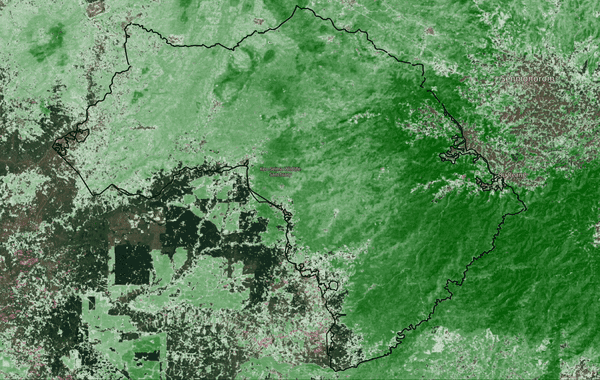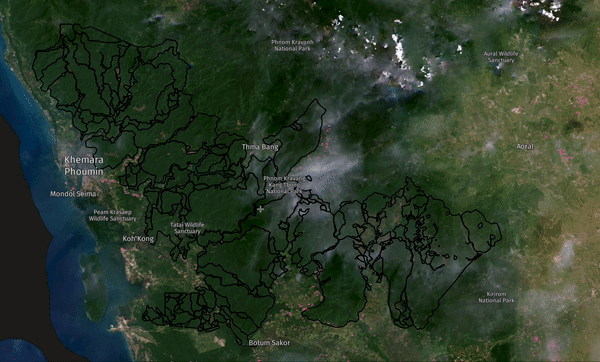

How can we see the tangible, real-world impact of the carbon credits we buy from a project? It’s a request we often get from our Lune customers.
So, to help bring the impact of business carbon offsetting to life, we’re publishing monthly updates from Lune’s library of curated, high-quality carbon offset projects (we won’t have updates for every project every time, but we’ll share what we do) – and this is the update for November 2022.
To support any of the projects mentioned in this blog, go to the Lune dashboard to buy carbon credits (you’ll need to sign-up or log-in to access the projects.)
1PointFive – Direct Air Capture 💨
1PointFive have reached a lease agreement with King Ranch, providing access to 430 km² of land which will be used to house up to 30 Direct Air Capture plants – with the potential to remove up to 30 million metric tons of CO2 per year.
The site will also be used for ‘pore space’, providing room to store up to 3 billion metric tons of CO2 in geologic reservoirs deep underground.
CarbonCure – concrete mineralisation 🏗️
Christie Gamble, Senior Director of Sustainability at CarbonCure, features in a new short documentary film titled Bare Metal, discussing the role in concrete production in reducing company embodied carbon emissions – in this case for the data centre industry.
Charm Industrial – Bio-oil sequestration 🛢
Charm Industrial is in the process of opening a second location for their bio-oil sequestration project: the Charm Miniforge in Fort Lupton, Colorado. This new site will be particularly focused on accelerating research and development for the project.
In other news, Charm Industrial have also recently launched major transparency upgrades to their carbon removal registry, meaning anyone can now see the complete life cycle of every single carbon credit purchase made from the project – and the carbon removal it represents.
Keo Seima – forest conservation 🌲
A benefit-sharing mechanism set up in the design of the Keo Seima project means that revenue from the sale of carbon credits also fund community projects for the indigenous Bunong people who live within the project area. In the past year, there’s been a particular focus on improving schooling, including:
- The distribution of free materials to local schools, including notebooks, pens, backpacks, and bicycles
- Scholarships and free school meals provided to students from low income families who otherwise would not have gone to school due to fees
- A partnership with Y.E.A Catalyst to launch an eco-schools programme with four schools within the project area. The new environmentally-friendly model of schooling includes sustainability-focused teaching modules and learning activities as well as implementing eco-friendly practices and infrastructure for the school itself.
Did you know that you can also see the Keo Seima Wildlife Sanctuary on Global Forest Watch? It’s a platform used for monitoring and managing forests and identifying and preventing deforestation – and with it you can take a look at the actual tree cover within the project area.
 Increasing tree loss cover (pink overlay) since 2000 in the area surrounding Keo Seima
Increasing tree loss cover (pink overlay) since 2000 in the area surrounding Keo SeimaUNDO – enhanced weathering 🪨
The UNDO team recently launched a monthly subscription service, enabling individuals to offset their own carbon emissions.
Their Head of Carbon, Simon Manley, and Head of Research, Mel Murphy, also featured on the Climate 21 podcast, discussing enhanced weathering as a solution for removing carbon from the atmosphere.
Running Tide – ocean carbon removal 🌊
The Running Tide team published a new blog post exploring the links between decarbonisation and carbon removal – two climate solutions which are often seen as separate pathways which we must choose between. The blog argues instead that we need them both combined. As an example, many engineered carbon removal solutions require a high amount of energy to run, and so we need to see widespread availability of clean, renewable energy to avoid this contributing further emissions to the problem.
And for an update on Running Tide’s work to measure and quantify the carbon removal of their kelp buoys, take a look at this Instagram reel about their ‘Polar Bear Project’ – using a 3D photo booth to better understand the growth of their kelp!

Southern Cardamon – forest conservation 🌲
The Southern Cardamon forest conservation project was designed to benefit local people as well as the environment, with the sale of carbon credits also funding community projects. This year, there’s been a focus on improving the local water system:
- 39 wells have been constructed within the project area, providing 733 families (3627 individual people) with clean drinking water powered by solar energy.
- A water drainage system has been built to reduce the impact of flooding in Pur Beung during the rainy season – a village which is usually inaccessible when it floods – and make it easier for villagers and wildlife to travel around the area all year round.
Did you know that you can also see the Southern Cardamom forest on Global Forest Watch? It’s a platform used for monitoring and managing forests and identifying and preventing deforestation – and with it you can take a look at the actual tree cover within the project area.
 Increasing tree loss cover (pink overlay) since 2000 in the area surrounding Southern Cardamom forest
Increasing tree loss cover (pink overlay) since 2000 in the area surrounding Southern Cardamom forestCurious about our own process for sourcing and evaluating the high-quality carbon projects we include in our library at Lune? Take a look at our guide.

Readers also liked
Readers also liked

Subscribe for emissions intelligence insights
Get the latest updates in the world of carbon tracking, accounting, reporting, and offsetting direct to your inbox.


